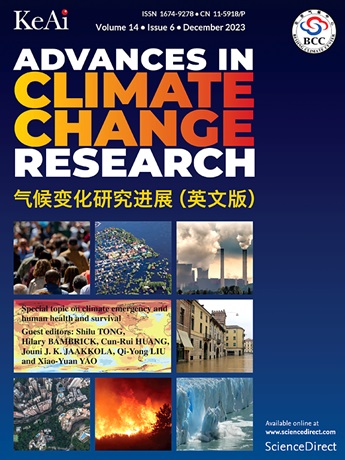The interaction between thermokarst lake drainage and ground subsidence accelerates permafrost degradation
IF 5.2
1区 地球科学
Q1 ENVIRONMENTAL SCIENCES
引用次数: 0
Abstract
Since it is not viable to directly evaluate permafrost change based on remote sensing, thermokarst lake drainage (TLD) and ground subsidence serve as indicators for depicting permafrost degradation. Unfortunately, the interaction between these two land surface processes as well as their joint effect remain unclear. In this study, based on a homogenized Landsat-Sentinel archive, TLD was detected in the Lena Basin during 2000–2022 thawing seasons using the modified LandTrendr algorithm. Only 9.7% of thermokarst lakes (TLs) experienced remarkable drainage, TLs larger than 30 hm2 were more prone to undergone drainage processes. The drainage proportion among TLs with different extents all exceeded 10% during 2013–2015, suggesting the gradual drainage which lasted for three years or longer was likely to be the dominating type. The subsidence rates (−1.64 ± 0.89 to −1.94 ± 1.41 mm per year) surrounding drained TLs were higher than regional average (−1.40 ± 1.19 to −1.60 ± 1.26 mm per year). As the distance to drained TLs decreased, the proportion of subsidence measurements, rates, and seasonal subsidence magnitude exhibited consistent increasing trends. The subsidence rate was higher in the direction of more intense drainage than that in other directions. The ground subsidence trigger TLD by providing meltwater and reducing structural support, while TLD in turn contributes to ground subsidence by forming drainage channels. More importantly, our findings proved that their interaction further accelerates permafrost degradation, which is critical for more accurately modeling the complex permafrost degradation processes under the warmer and wetter Arctic climate.
热岩溶湖排水与地面沉降的相互作用加速了多年冻土的退化
由于遥感无法直接评价多年冻土的变化,热岩溶湖排水(TLD)和地面沉降可作为描述多年冻土退化的指标。不幸的是,这两个陆面过程之间的相互作用以及它们的联合效应仍然不清楚。本研究基于均一化的Landsat-Sentinel档案,利用改进的LandTrendr算法在2000-2022年融化季节对勒拿河流域的TLD进行了检测。只有9.7%的热岩溶湖(TLs)经历了显著的排水过程,大于30 hm2的热岩溶湖更容易发生排水过程。2013-2015年不同程度tl的排水比例均超过10%,表明3年以上的渐进式排水可能为主导类型。排水隧道周边沉降速率(- 1.64±0.89 ~ - 1.94±1.41 mm /年)高于区域平均沉降速率(- 1.40±1.19 ~ - 1.60±1.26 mm /年)。随着与排水tl距离的减小,沉降量所占的比例、速率和季节沉降幅度均呈一致的增加趋势。沉降速率在排水强度较大的方向大于其他方向。地面沉降通过提供融水和减少构造支撑而引发TLD,而TLD又通过形成排水通道而导致地面沉降。更重要的是,我们的研究结果证明,它们的相互作用进一步加速了永久冻土的退化,这对于更准确地模拟更温暖、更潮湿的北极气候下复杂的永久冻土退化过程至关重要。
本文章由计算机程序翻译,如有差异,请以英文原文为准。
求助全文
约1分钟内获得全文
求助全文
来源期刊

Advances in Climate Change Research
Earth and Planetary Sciences-Atmospheric Science
CiteScore
9.80
自引率
4.10%
发文量
424
审稿时长
107 days
期刊介绍:
Advances in Climate Change Research publishes scientific research and analyses on climate change and the interactions of climate change with society. This journal encompasses basic science and economic, social, and policy research, including studies on mitigation and adaptation to climate change.
Advances in Climate Change Research attempts to promote research in climate change and provide an impetus for the application of research achievements in numerous aspects, such as socioeconomic sustainable development, responses to the adaptation and mitigation of climate change, diplomatic negotiations of climate and environment policies, and the protection and exploitation of natural resources.
 求助内容:
求助内容: 应助结果提醒方式:
应助结果提醒方式:


